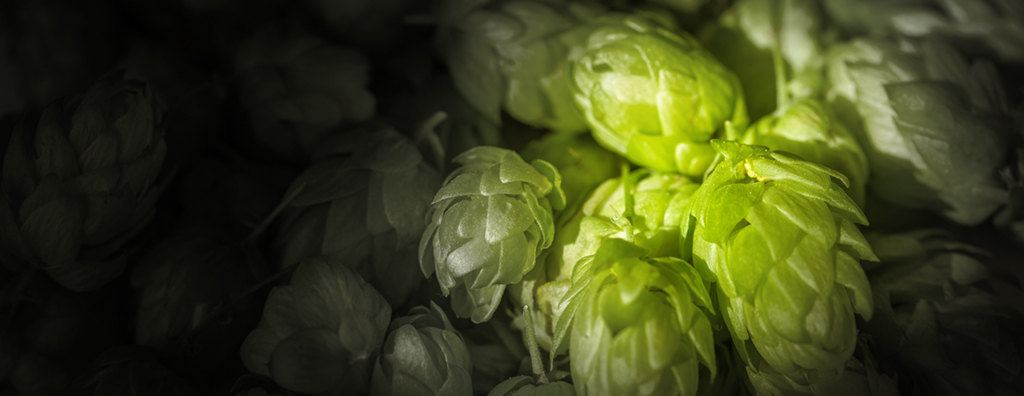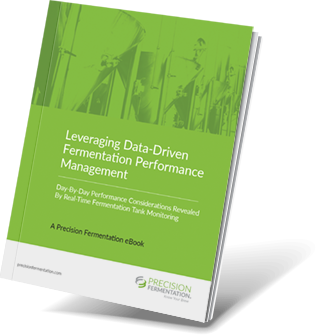Hop Creep: Causes, Effects and Prevention

Hop creep is not an outdoor children’s game or an unsavory character who lurks around the taproom. Hop creep is a common term that refers to the overattenuation of dry-hopped beer. One might otherwise describe it as a sneaky, unwanted secondary fermentation that can lower gravity, provoke a diacetyl spike, and create excess alcohol and CO2.
Hop creep can be subtle and slow to develop, which means that if a dry-hopped beer isn’t monitored or controlled properly, it can creep into beer after it leaves the building. This means unsuspecting drinkers may be the first to notice it in the form of a buttery flavor, an ABV higher than stated on the label or, most troublesome, overpressurization that results in popped bottle caps or exploding cans.
What Causes Hop Creep?
Research on hop creep was first published in 1893. Scientists then basically forgot about the phenomenon until the mid-2010’s, when the popularity of dry-hopped — often hazy — IPAs brought it back to the forefront. Modern science corroborates what those 19th century professionals postulated: refermentation appears to occur when diastase enzymes in hops get introduced to unfermentable carbohydrates in the presence of active yeast.
“This may be particularly problematic for hazy/juicy styles of beer where yeast counts and hopping rates are both high,” write Oregon State University (OSU) hops researchers Arnbjørn Stokholm and Thomas Shellhammer in a technical brief published by the Brewers Association.
To delve a little deeper into the biochemistry, evidence strongly suggests that hops carry amylolytic (AKA starch-degrading) enzymes that convert long-chain, unfermentable dextrins into fermentable sugars. These enzymes likely become inert when subjected to a boil. But when they’re added to unpasteurized beer on the cold side, it’s believed that any live yeast that remains in suspension acts on those sugars to cause a gradual secondary fermentation.
Do All Hops Lead to Hop Creep?
Experiments have shown that while different hop varieties perform similarly in a soluble starch solution, they behave differently in real-life dry-hopping trials. A 2018 article published in the Journal of the American Society of Brewing Chemists explains that, while the theory is unproven, hop genetics do appear to impact their activity, with Amarillo® and Cascade altering the alcohol and gravity levels more than Simcoe®, Centennial and Citra®. That said, the maturity (but not age) of the plant or cone, farming conditions and handling and processing during and after harvest heavily impacted the hop creep activity of each of these varieties.
Can Hop Creep Be Prevented?
The biggest factors that affect refermentation of dry-hopped beers are hop contact time and amount of active yeast, followed by temperature. A recent technical brief published by the Brewers Association concludes that warmer dry-hopping temperatures and longer exposure time increase the formation of fermentable sugars, and heat-treating hops before dry-hopping can deactivate their enzymatic activity.
So, while it’s not necessarily possible to prevent hop creep altogether it is possible to monitor, reduce and control it. Brewers can monitor for overattenuation by measuring the alcohol and specific gravity. They can reduce its likelihood by writing recipes for a higher-fermentation wort or by factoring the effect of hop creep into the brewing process by intentionally underattenuating their beer. They can also: add some of the hops to the whirlpool pre-fermentation; filter or pasteurize their liquid; add alpha acetolactate decarboxylase enzymes to reduce diacetyl formation; or try to ensure an unbroken cold-chain distribution system.
They can also lower the amount of contact between hops and beer. Despite conventional wisdom, a 2012 study conducted at Oregon State University shows that the intensity of hop aroma is the same after dry-hopping pellets for six hours and for four days and indicate that it only takes 24 hours for linalool and myrcene to reach almost full extraction levels.
Moreover, researchers have found that shorter dry-hop times equate to more fruity aromatic characteristics while longer dry-hopping times are associated with polyphenolic herbal notes.
Brewers Supply Group advises, “Considering contact time as a way to mitigate hop creep on beer with higher dry hop loads, it may be time to consider how long you are leaving your beer on hops.”
Should You Slow Down or Speed Up Hop Creep?
It’s possible to play with temperature to either slow down hop creep or speed it up, and brewers generally prefer one method over the other. They can try to get it over with, so to speak, by forcing it to develop in the tank instead of surprising end-users drinking out of a keg, can or bottle that has been warmed at some point in post-production. Alternatively, they might choose to create cool conditions that minimize its formation.
As Scott Janish, author of The New IPA: Scientific Guide to Hop Aroma and Flavor, notes in a 2021 Master Brewers Association of the Americas paper on dry-hopping, research out of OSU concluded that dry hopping at 50°F versus 68°F for just one to two days resulted in the production of fewer fermentables.
One option is to “dry hop warm with extended contact time to encourage any hop creep to happen in the tank, until such time as VDK tests are passed,” he writes, referring to the vicinal diketones family of flavor compounds, which includes diacetyl. “The other is to do it cool and for a short duration to try to reduce the overall enzymatic activity that is taking place. Essentially, there is less chance of hop creep when dry hopping is done cooler and quicker.”
He says the cooler dry-hopping method has never failed him.
While hop creep continues to be studied for common causes and effects, the phenomenon is complex and dependent on a range of variables. One of the best ways to manage the effects at any particular brewery is keeping a close eye on the key parameters. Taking pH, gravity, and VDK counts before dry-hopping and comparing them with ongoing measurements afterwards will give insight into how creep might be impacting any specific beer, and more importantly, how long it lasts. If you think hop creep might be happening in your beers, having detailed QC analysis is key.
Free eBook: Leveraging Data-Driven Fermentation Performance Management
 Can fermentation management be improved, as a process? This eBook explores, in detail, how fermentation performance data analysis helps elevate product and business outcomes in a modern brewery, whether brewpub, microbrewery or regional craft brewer.
Can fermentation management be improved, as a process? This eBook explores, in detail, how fermentation performance data analysis helps elevate product and business outcomes in a modern brewery, whether brewpub, microbrewery or regional craft brewer.
You will learn:
- Day-by-day performance considerations – learned through the extensive examination of real-time fermentation tank data.
- Key recommendations from the Precision Fermentation science team at each major step of fermentation – “Day zero” (i.e. before you pitch your yeast), the first 24 hours, and day two through the end of fermentation.
- Best practices – Activity to watch out for, broken down by each key measurement – Dissolved oxygen, gravity, pH, pressure, internal/external temperature, and conductivity.
- Key findings that can help you solve problems and improve your results.

